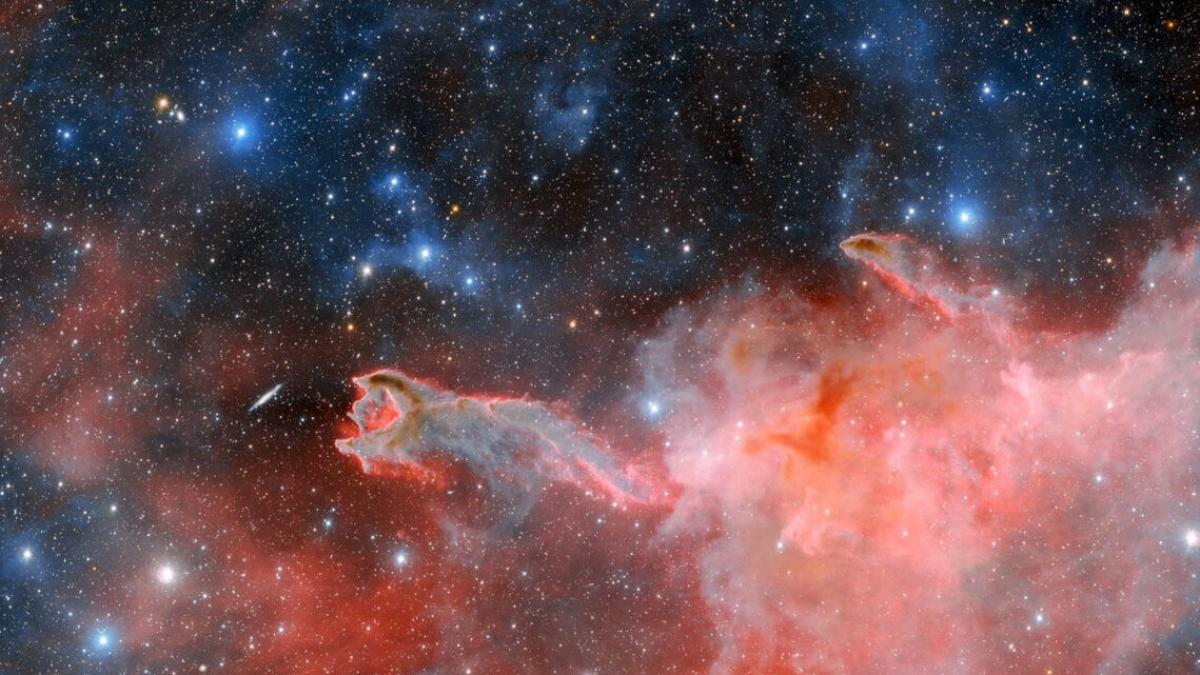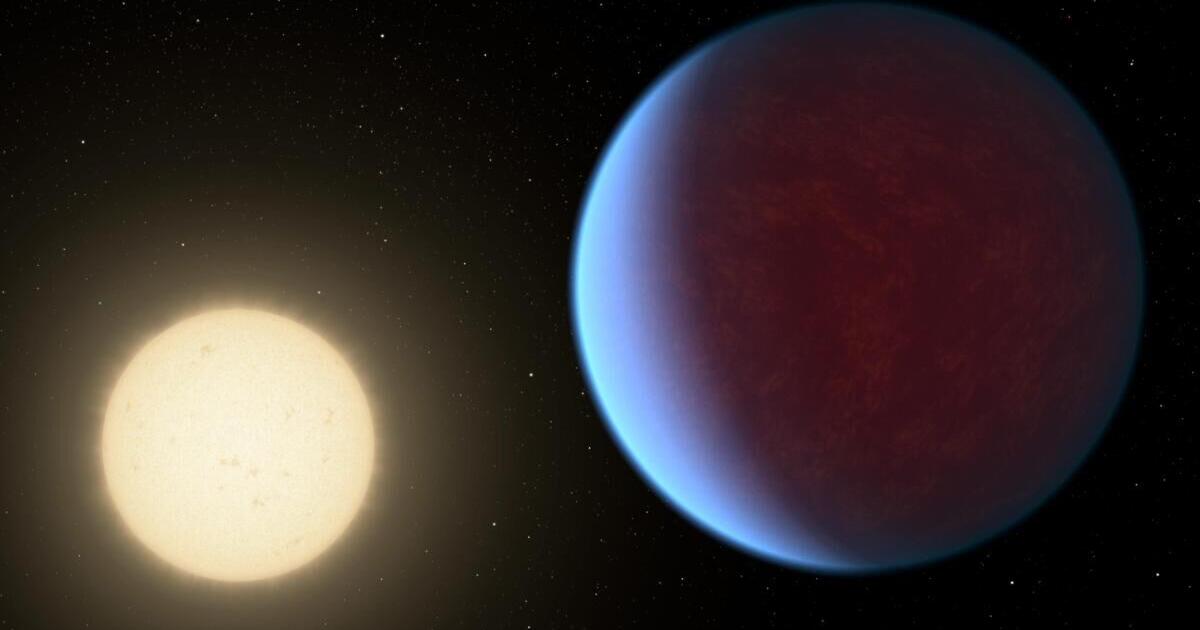(CNN) — An asteroid sample collected by NASA that landed on Earth is giving scientists a chance to learn more about the origins of the Solar System and captures part of a large space rock that could potentially collide with our planet in the future. This is the first time the company has achieved such a feat.
Seven years after its launch into space, the OSIRIS-REx spacecraft flew by Earth this Sunday and sent back a beautiful sample of the near-Earth asteroid Bennu.
NASA broadcast the delivery and rescue operations live.
OSIRIS-REx, which stands for Origin, Spectral Interpretation, Resource Identification, Conservation, Regolith Explorer, lifted off in 2016 and began orbiting Bennu in 2018. The spacecraft began collecting samples in 2020 and returning to Earth in May 2021.
The spacecraft collected a sample of rocks and soil from Bennu in October 2020. (Credit: NASA/Goddard/University of Arizona)
The spacecraft dropped a sample capsule containing about 250 grams of rocks and asteroid soil from 102,000 kilometers above Earth’s surface on Sunday morning and entered the planet’s atmosphere at 10:00:42 a.m. (Miami time). At a speed of about 44,498 kilometers per hour.
Parachutes were used to gently land the capsule at a speed of 17.7 kilometers per hour. The model landed at the Department of Defense’s Utah Test and Training Range about 10 minutes after entering the atmosphere.
OSIRIS-REx continues its journey through the Solar System and has already left for a detailed look at another asteroid called Apophis.
What happens after landing?
Rich Burns, OSIRIS-REx program manager at NASA’s Goddard Space Flight Center in Greenbelt, Maryland, said four helicopters transported rescue and research teams to the landing site and conducted assessments to ensure the capsule was safe. The team confirmed that there was no breach during the capsule landing.
Rescue teams trained for months for the event and prepared to recover the capsule, explained Sandra Freund, OSIRIS-REx project manager for Lockheed Martin Space, which partnered with NASA to build the capsule. The spacecraft provided flight operations and assisted in the recovery of the 45 kg capsule.
The initial rescue team, equipped with protective gloves and masks, made sure the capsule was cool enough to touch as it reached temperatures of 2,760 degrees Celsius during re-entry, Burns said. The team also ensured that the capsule’s battery did not rupture and release toxic gases.
A sample of asteroid Bennu entered Earth’s atmosphere at 10:42 a.m. (Miami time) on Sunday. (Credit: NASA)
A scientific team collected samples from the landing site, including airborne particles, dust and dirt.
“One of the main science goals of OSIRIS-REx is to return a sample that is pristine, and original so that no extraneous matter interferes with our research during sample analysis,” said OSIRIS-REx Principal Investigator Dante Lauretta of the University of Arizona in Tucson. . “Although that’s unlikely, we want to make sure that any material in the Utah range that might come into contact with the specimen is well documented.”
A helicopter carried the sample in a cargo net to a temporary clean room near the landing site. Inside this space, the curation team will run a stream of nitrogen, called a purge, to prevent Earth’s atmosphere from entering and contaminating the sample bottle. Nicole Luning, OSIRIS-REx security manager at NASA’s Johnson Space Center in Houston, explained that the largest pieces of the capsule will be removed.
The model capsule, the size of a large truck tire, and its main parachute can be seen after landing in the Utah desert. (Credit: NASA)
This Monday, a team will prepare the sample vial for transport on a C-17 flight to NASA’s Johnson Space Center in Houston. Scientists hope to remove the lid to see the sample for the first time this Tuesday.
What the model can reveal
Details about the prototype will be revealed in a NASA broadcast from the Johnson Space Center on October 11. Although the science team hasn’t had time to fully evaluate it, researchers plan to collect some of the microscopic material from the top of the container this Tuesday for a quick analysis that can be shared in October, Lauretta said.
Scientists will spend the next two years studying the rocks and soil in a clean room at the Johnson Space Center. The sample will also be separated and sent to laboratories around the world, including OSIRIS-REx mission partners at the Canadian Space Agency and the Japan Aerospace Exploration Agency. About 70% of the specimens remain intact in the repository so that future generations, with better technology, can learn more than is possible now.
Lori Glaze, director of NASA’s Planetary Science Division, said the government shutdown would not affect the safety and safe handling of asteroid samples.
“Some of the steps leading to this long-awaited analysis may be delayed, but any disruption to the schedule will ensure the sample is safe and secure,” he said at a press conference on Friday. “The sample has been waiting over 4 billion years for humans to study it, and if we take a little longer, I think we’ll be fine.”
Scientists will carefully examine the sample using special glove boxes at the Johnson Space Center. (Credit: NASA)
Together with a sample of the asteroid Ryugu sent earlier by the Japanese Hayabusa 2 project, the rocks and soil could reveal important information about the early days of our solar system. Scientists believe that carbonaceous asteroids like Bennu collided with Earth early in life, providing elements such as water.
“Scientists believe that asteroid Bennu is representative of the oldest objects in the solar system, large dying stars and supernova explosions,” said Glaes. “For this reason, NASA is investing in these dedicated small-body missions to increase our understanding of how our Solar System formed and how it has evolved.”
The model can also provide information about Bennu’s potential collision with Earth in the future.
A better understanding of the population of near-Earth asteroids that could collide with our planet is critical. A better knowledge of their composition and orbits is critical to predicting which asteroids are likely to come closest to Earth and when, and to develop methods to deflect these asteroids based on their composition.



:quality(85)/cloudfront-us-east-1.images.arcpublishing.com/infobae/YVT2WGE5YVGEJASYQ7JKEUNCWU.jpg)

